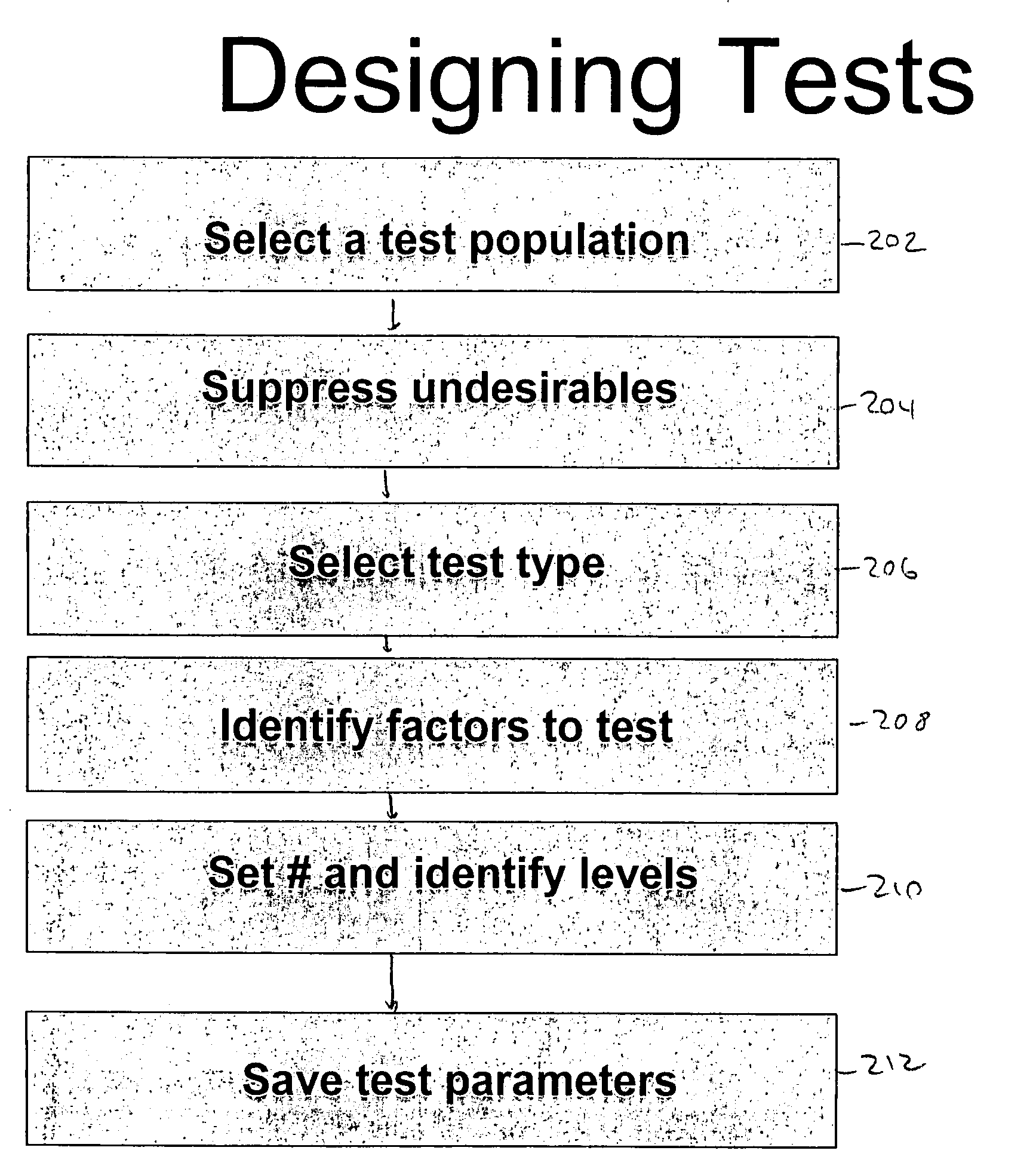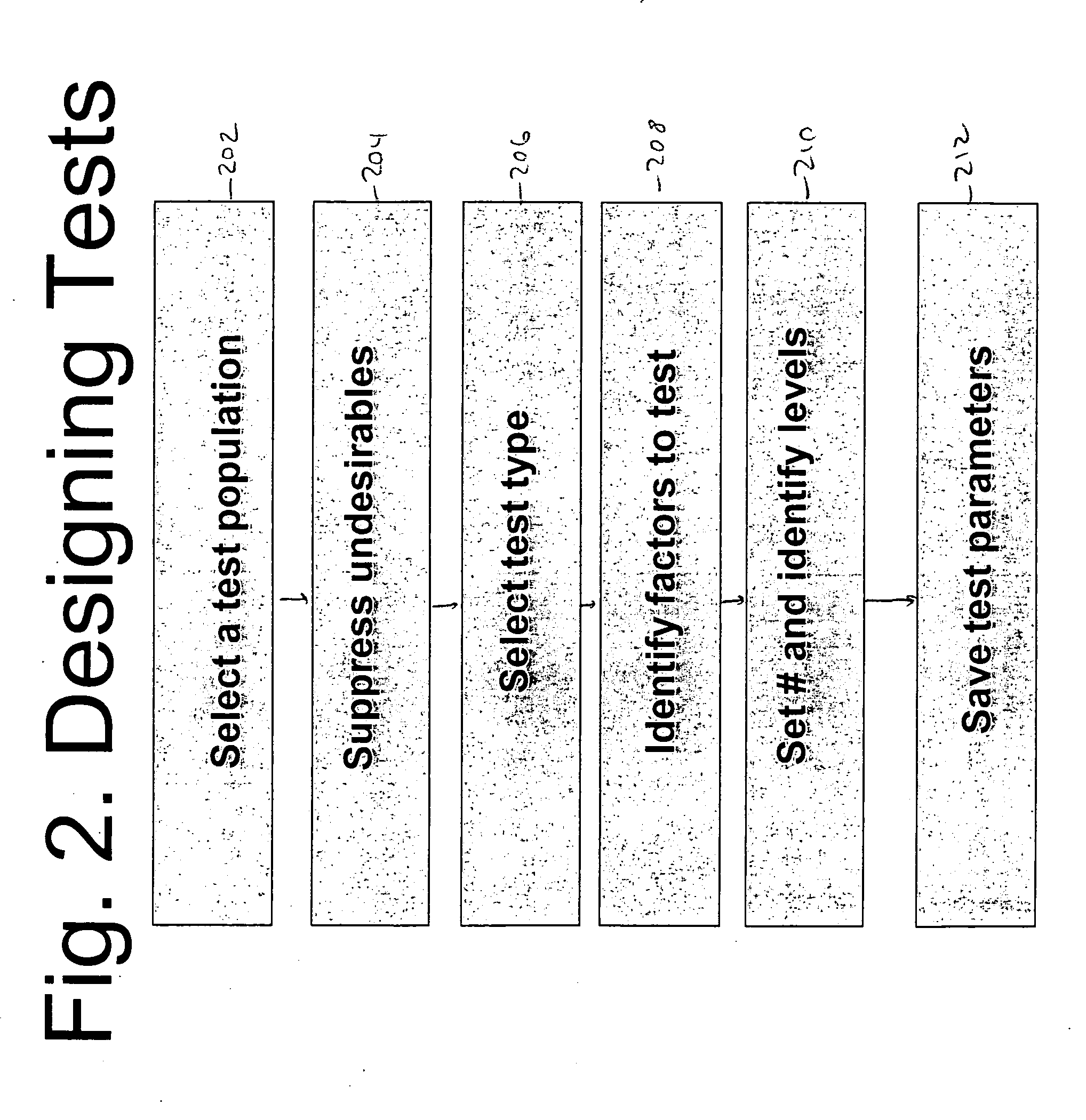Factorial design expert system
a factorial design and expert system technology, applied in the field of statistics, marketing and experimental design, can solve the problems of conceptually difficult to understand and interpret factorial design for experimenters not well versed in statistics, and achieve the effects of less expensive, difficult to understand and interpr
- Summary
- Abstract
- Description
- Claims
- Application Information
AI Technical Summary
Benefits of technology
Problems solved by technology
Method used
Image
Examples
Embodiment Construction
[0025]A description of preferred embodiments of the invention follows.
[0026]The following definitions are used in this document:
DEFINITIONS
[0027]Factor—a variable to test; examples include but are not limited to collateral size, discount, extent of personalization, communications channel, etc.
[0028]Level—the number of different values for a factor; typically there are two (5% off, 10% off) or three different levels; in a two level design, the higher value is typically denoted by a plus sign (+) and the lower value is denoted by a minus sign (−) when the values are numerical; the values are not necessarily numerical
[0029]Treatment—the level value delivered to a subject; for example if the factor is discount level and the level values are 5% and 10%, then those subjects offered the 10% discount are said to have been given the +treatment
[0030]Control group—a subset of the subject population that is set aside for a different treatment to determine the effect of a factor; the control gro...
PUM
 Login to View More
Login to View More Abstract
Description
Claims
Application Information
 Login to View More
Login to View More - R&D
- Intellectual Property
- Life Sciences
- Materials
- Tech Scout
- Unparalleled Data Quality
- Higher Quality Content
- 60% Fewer Hallucinations
Browse by: Latest US Patents, China's latest patents, Technical Efficacy Thesaurus, Application Domain, Technology Topic, Popular Technical Reports.
© 2025 PatSnap. All rights reserved.Legal|Privacy policy|Modern Slavery Act Transparency Statement|Sitemap|About US| Contact US: help@patsnap.com



